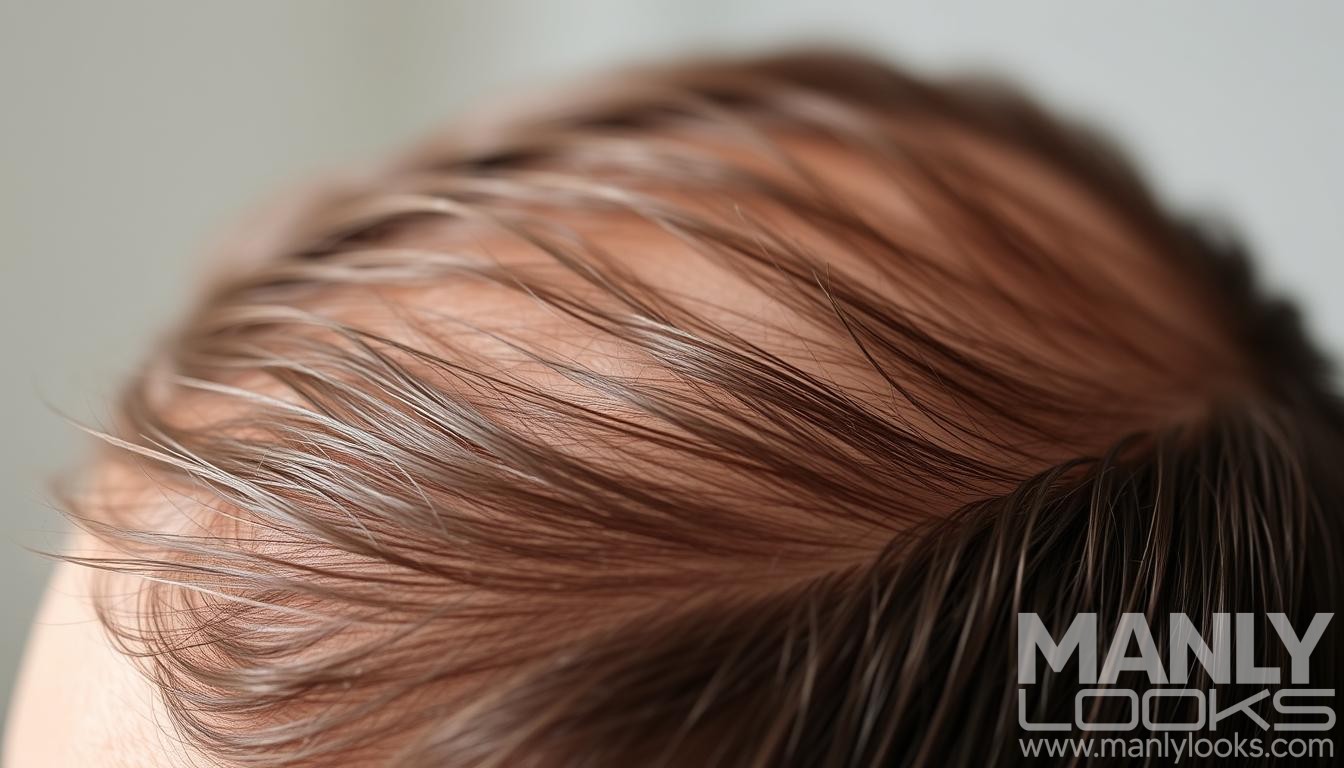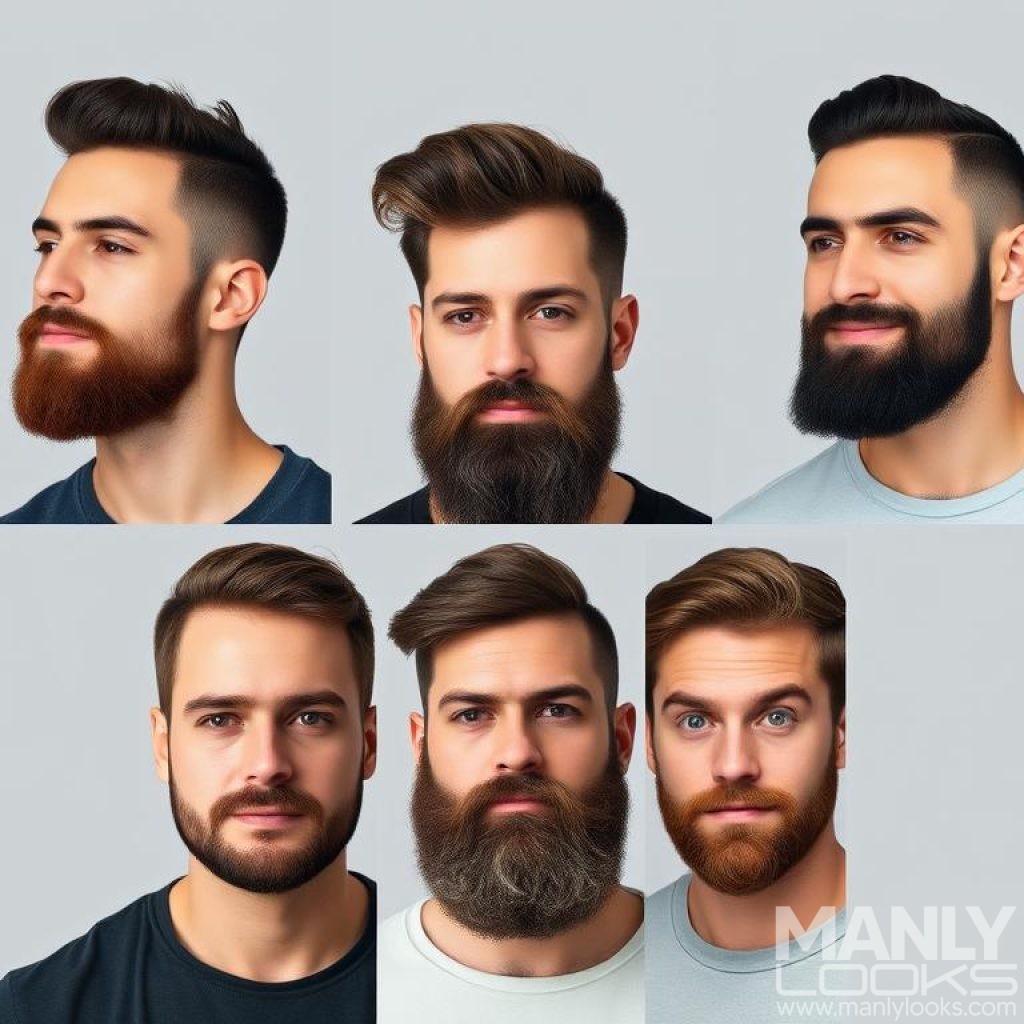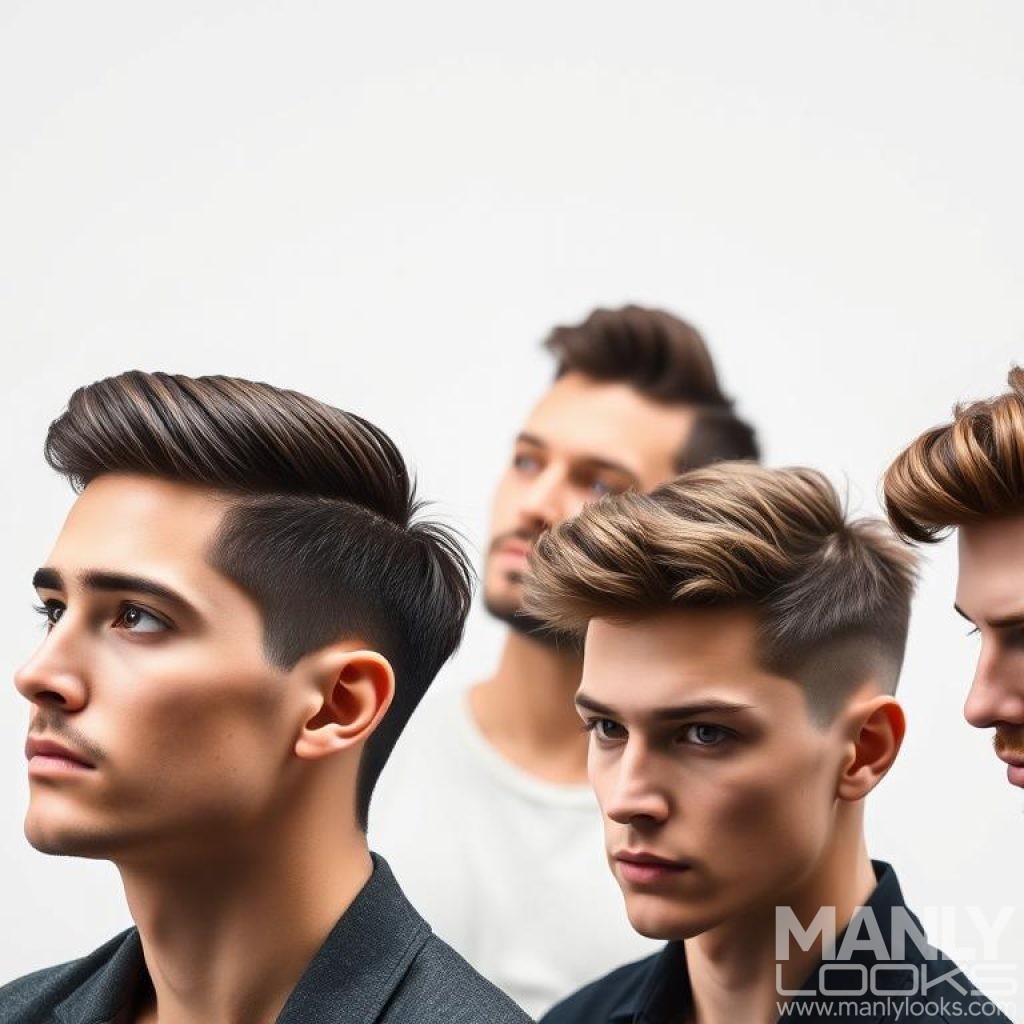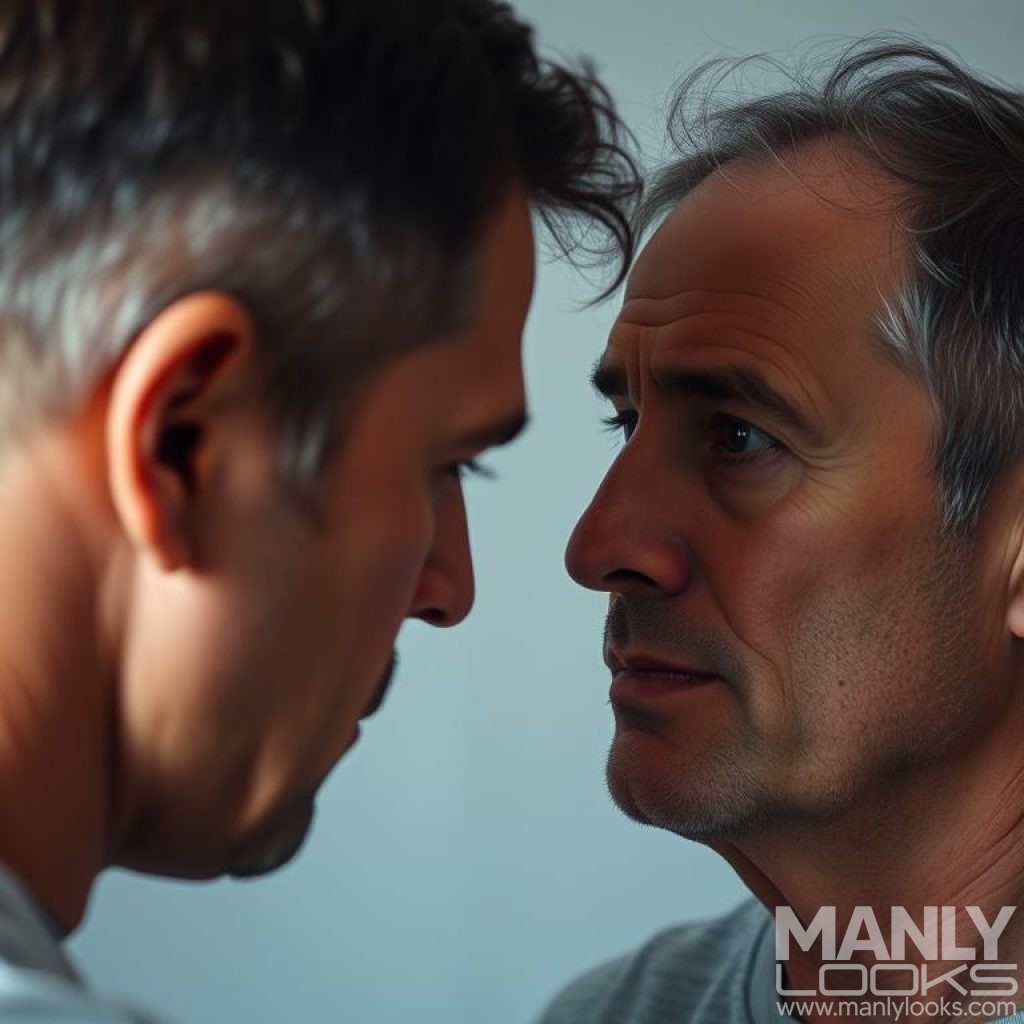Hair loss is a big worry for many men around the world. It can happen for many reasons, like genetics, hormonal shifts, and lifestyle choices. Knowing what causes it is key to fixing the problem.
By taking early action, men can keep their hair healthy. Eating right, handling stress well, and using the right treatments can help. This article will show you how to stop hair loss and keep your scalp healthy.
Key Takeaways
- Understand the causes of hair loss
- Adopt a balanced diet to promote hair health
- Manage stress to reduce hair loss risk
- Explore appropriate treatments for hair loss
- Maintain a healthy scalp through proper care
Understanding Male Pattern Baldness
Male pattern baldness, also known as androgenetic alopecia, is a hereditary condition. It’s caused by hormones and leads to a receding hairline and thinning on the crown. This can result in partial or complete baldness.
The Science Behind Hair Loss
Hair loss happens when hair follicles shrink. This makes hair thinner and shorter. Genetics, hormones, and age all play a part in this process.
DHT and Its Role in Hair Thinning
Dihydrotestosterone (DHT) is a strong form of testosterone. It’s key in male pattern baldness. DHT makes hair follicles shrink, leading to thinner hair and eventual loss.
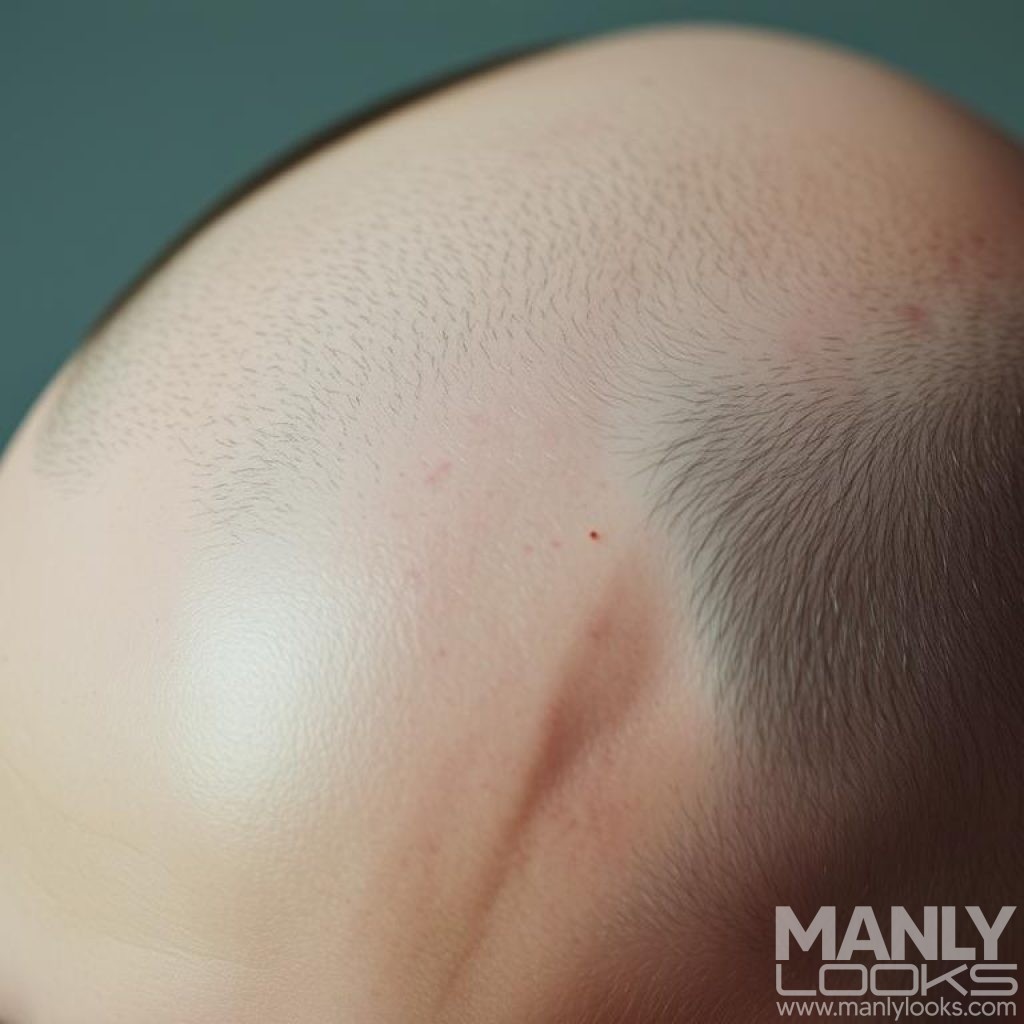
Genetic Factors in Male Baldness
Genetics are a big factor in male baldness. Men with a family history of baldness are more likely to lose their hair. Knowing your genetic risk can help manage the condition.
Common Age Patterns of Hair Loss
Male pattern baldness can start as early as puberty. But it’s more common in men in their 20s and 30s. The rate and extent of hair loss vary, with some men losing a lot by middle age.
| Age Group | Common Hair Loss Patterns |
|---|---|
| 20-30 years | Initial signs of hair thinning, receding hairline |
| 30-50 years | Noticeable balding, thinning on the crown |
| 50+ years | Significant balding, possible complete hair loss |
Dr. John Smith, a well-known dermatologist, says, “Understanding the causes of male pattern baldness is essential for effective treatments.”
“The role of DHT in hair loss is well-established, and targeting this hormone is a common strategy in treating male pattern baldness.”
Signs You’re Experiencing Hair Loss
Spotting the early signs of hair loss is key to stopping it from getting worse. Hair loss shows up in many ways. It’s important to know what to look for.
Early Warning Indicators
Look out for thinning hair on top, round or patchy bald spots, and hair that falls out easily. These signs might be small, but catching them early is important.
Different Types of Male Hair Loss
Male hair loss comes in several forms, like male pattern baldness, alopecia areata, and telogen effluvium. Knowing which type you have helps find the right treatment.
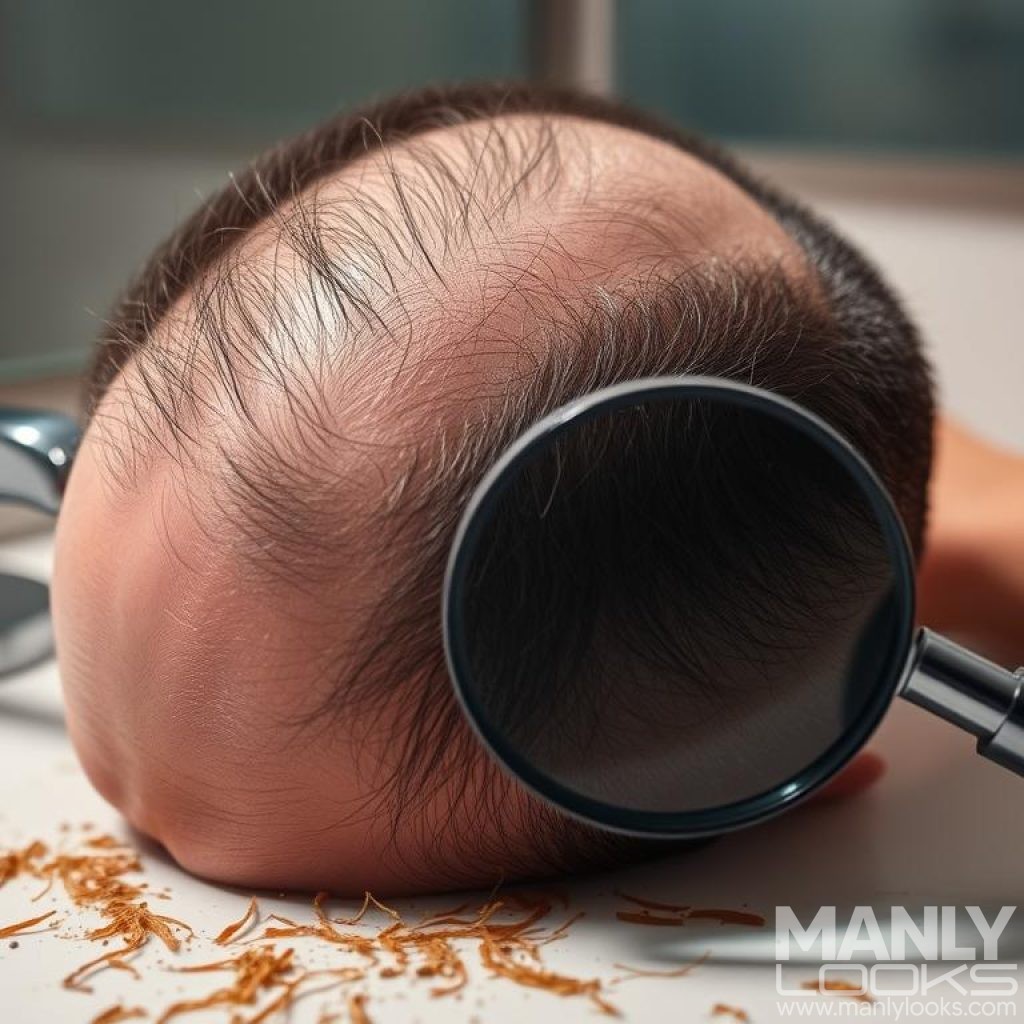
The Norwood Scale of Balding
The Norwood Scale helps measure male pattern baldness. It goes from Type I, with little hair loss, to Type VII, with a lot.
When to Seek Professional Help
If you’re losing a lot of hair or it’s making you feel bad about yourself, get help. A dermatologist can suggest the best treatments for your hair loss.
Lifestyle Factors That Contribute to Hair Loss
Understanding how daily habits affect hair health is key. Factors like stress, poor diet, lack of sleep, smoking, and too much alcohol can cause hair loss.
Stress and Its Impact
Stress is a big contributor to hair loss. When stressed, our body releases cortisol, a hormone that messes with hair growth. High cortisol levels can make hair thinner and fall out more. Reducing stress through meditation or yoga can help.

Diet and Nutrition Deficiencies
Eating a balanced diet full of vitamins and minerals is key for hair growth. Nutritional deficiencies, like in biotin, vitamin D, and iron, can cause hair loss. Eating foods rich in these nutrients, like leafy greens, nuts, and fish, supports hair health.
Sleep Quality and Hair Health
Good sleep is essential for hair health. Poor sleep can cause hair loss by messing with the body’s repair processes. Getting 7-8 hours of quality sleep each night helps hair grow.
Smoking and Alcohol Effects
Smoking and drinking too much alcohol harm health and can lead to hair loss. Smoking damages hair follicles, and too much alcohol can cause nutritional deficiencies that harm hair. Reducing or quitting these habits can stop hair loss.
By tackling these lifestyle issues, people can prevent hair loss and improve their overall health.
Nutrition Strategies to Prevent Hair Loss in Men
Nutrition is key to keeping hair healthy. Eating foods rich in vitamins and minerals helps prevent hair loss. A diet full of these nutrients is important for strong hair.
Essential Vitamins and Minerals
Vitamins and minerals are vital for hair growth. Not having enough can cause hair to fall out.
Biotin and B Vitamins
Biotin is a B-complex vitamin that helps hair grow. You can find biotin in eggs, nuts, and leafy greens. Other B vitamins, like B6 and B12, also help keep hair healthy.
Iron, Zinc and Other Minerals
Iron deficiency can lead to hair loss, more in women but also in men. Zinc is another key mineral for hair growth. Iron is in red meat, spinach, and beans. Zinc is in oysters, beef, and chicken.
Protein Requirements for Healthy Hair
Hair is made of protein, so you need enough protein to keep it healthy. Good sources of protein are lean meats, fish, eggs, and dairy.
Foods That Support Hair Growth
Eating foods that help hair grow can prevent loss. These include:
- Nuts and seeds for healthy fats and antioxidants
- Leafy greens like spinach and kale
- Fatty fish for omega-3 fatty acids
- Sweet potatoes for vitamin A
Supplements for Hair Health
While a good diet is important, supplements can also help. Biotin supplements are known for promoting hair growth. But, always talk to a healthcare professional before taking any supplements.

Effective Hair Care Routines
Good hair care is more than just washing your hair. It’s about practices that keep your hair healthy. A balanced hair care routine can stop hair loss and keep your hair healthy.
Proper Washing Techniques
Washing your hair right is key to keeping it healthy. Use warm water, not hot, and gently massage your scalp. This boosts blood flow. Also, avoid harsh shampoos that take away your hair’s natural oils.
Choosing the Right Shampoos and Conditioners
Picking the right shampoo and conditioner is important. Look for sulfate-free products that match your hair type. Using conditioner after shampooing keeps moisture in and cuts down on breakage.
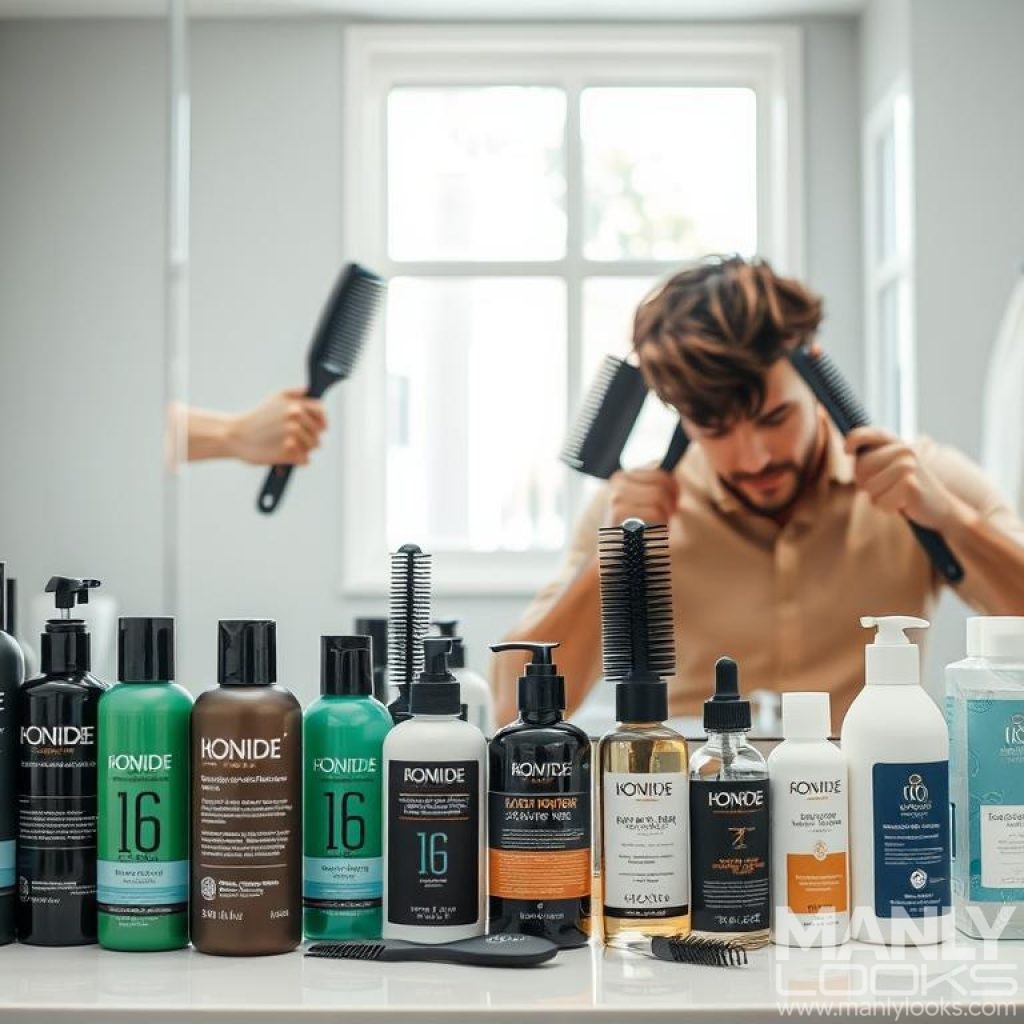
Scalp Health Maintenance
A healthy scalp is essential for hair growth. Regular scalp massages boost blood flow and lower stress. Also, keep your scalp clean and free from irritants.
Avoiding Damaging Hair Practices
Stay away from harsh chemical treatments, too much heat styling, and rough handling. These can harm your hair and cause loss. Choose gentle styling and use heat protectants when styling with heat.
| Hair Care Practice | Benefit |
|---|---|
| Regular scalp massage | Increases blood flow and reduces stress |
| Using gentle shampoos | Preserves natural oils and prevents dryness |
| Avoiding excessive heat styling | Reduces damage and breakage |
Natural Remedies for Male Hair Loss
Men dealing with hair loss can find comfort in natural remedies. These options support hair health and can be a good addition to hair care routines. They are not proven for everyone, but they offer a natural way to help.
Essential Oils and Scalp Treatments
Essential oils like rosemary and lavender might help with hair growth. Rosemary oil is thought to improve scalp circulation, which is good for hair. Massaging these oils into the scalp can make them work better.

Herbal Supplements That Work
Herbal supplements like saw palmetto are popular for hair loss. Saw palmetto might block DHT, a hormone linked to hair loss. Biotin and horsetail are also believed to help hair health.
- Saw Palmetto: May help block DHT production.
- Biotin: Essential for hair growth and maintenance.
- Horsetail: Rich in silica, which can strengthen hair.
Scalp Massage Techniques
Scalp massage is a simple yet effective way to help hair grow. By massaging the scalp gently, you can boost blood flow. This nourishes the hair follicles. You can do this by massaging your scalp with your fingertips in a circular motion.
Ayurvedic and Traditional Approaches
Ayurvedic medicine has traditional ways to fight hair loss. It includes herbal pastes and oils for the scalp. These methods are based on ancient practices and aim to promote hair growth and scalp health.
By adding these natural remedies to their hair care, men can actively manage hair loss. While results may differ, these methods offer a natural alternative to traditional treatments.
Medical Treatments and Medications
There are medical options to fight male pattern baldness. These include FDA-approved drugs. They aim to slow hair loss and sometimes grow new hair.
FDA-Approved Hair Loss Medications
The U.S. FDA has approved several drugs for hair loss in men. Finasteride and minoxidil are two common ones.
Finasteride (Propecia)
Finasteride stops the hormone DHT from causing hair loss. It reduces DHT, slowing hair loss and possibly growing new hair.
Minoxidil (Rogaine)
Minoxidil is applied to the scalp to grow hair. It makes hair follicles wider, leading to thicker, healthier hair.
Prescription Treatments
Other prescription treatments are also available for hair loss. They address conditions that cause hair loss.
Understanding Side Effects
Hair loss treatments can have side effects. Finasteride might lower libido and cause erectile dysfunction. Minoxidil can irritate the scalp. Always talk to a doctor about possible side effects.
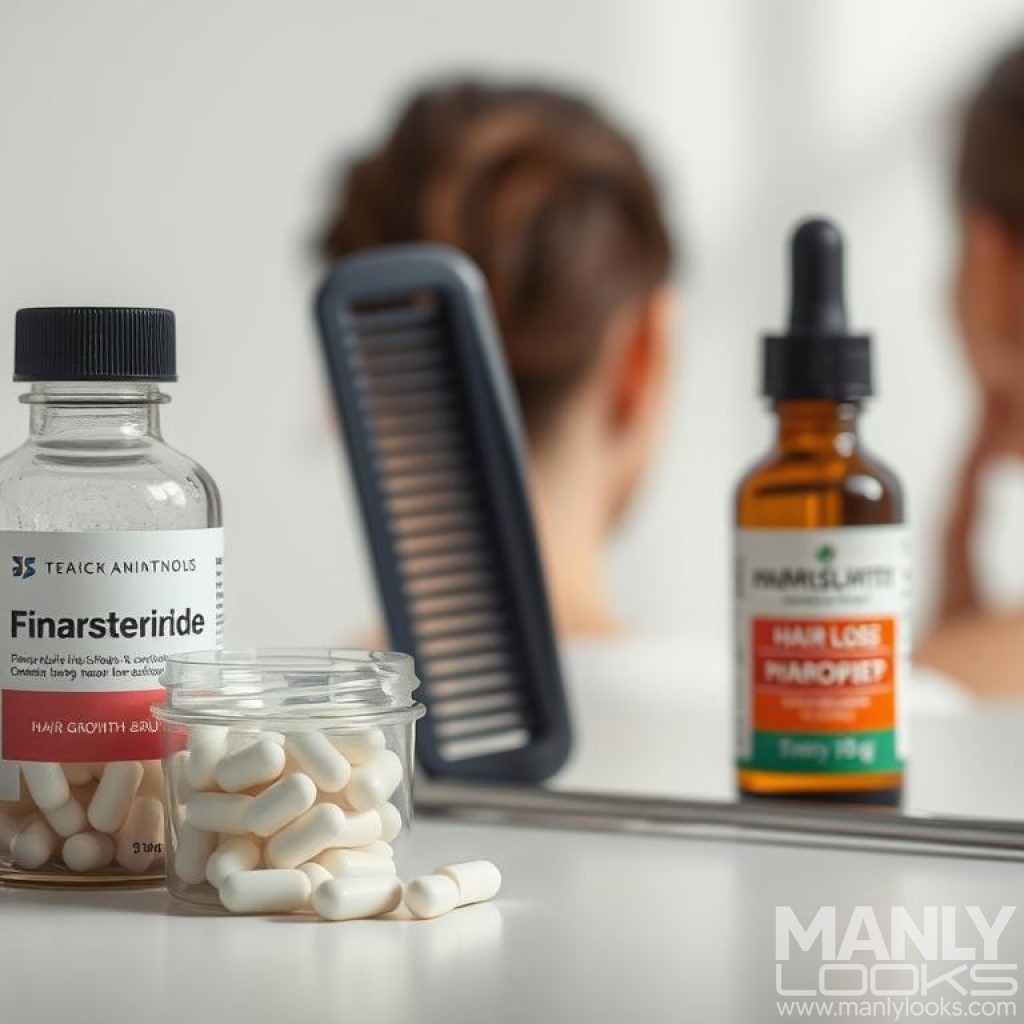
When to Start Treatment for Best Results
Starting treatment early is important for effective hair loss treatment. Early action can lead to better results. A doctor can help choose the right treatment.
Men can make informed choices about treating hair loss. There are many options, including FDA-approved drugs and other treatments. This helps address male pattern baldness.
How to Prevent Hair Loss in Men Through Stress Management
High stress levels can lead to hair loss. Managing stress is key for health. It boosts well-being and keeps hair healthy.
Stress Reduction Techniques
There are many ways to lower stress. Meditation and yoga are great for stress relief. Deep breathing exercises also calm the mind and reduce stress.
“Meditation is not about stopping thoughts, but about observing them without judgment.” – Unknown
Exercise and Its Benefits for Hair
Regular exercise is good for health and hair. It cuts down stress and boosts circulation, helping hair grow.
| Exercise Type | Benefits for Hair |
|---|---|
| Cardio | Improves circulation, promoting hair growth |
| Yoga | Reduces stress, improves overall well-being |
| Weightlifting | Enhances overall health, including hair health |
Mindfulness and Mental Health
Mindfulness practices like meditation and deep breathing boost mental health. They reduce stress and anxiety, helping the scalp and promoting hair growth.
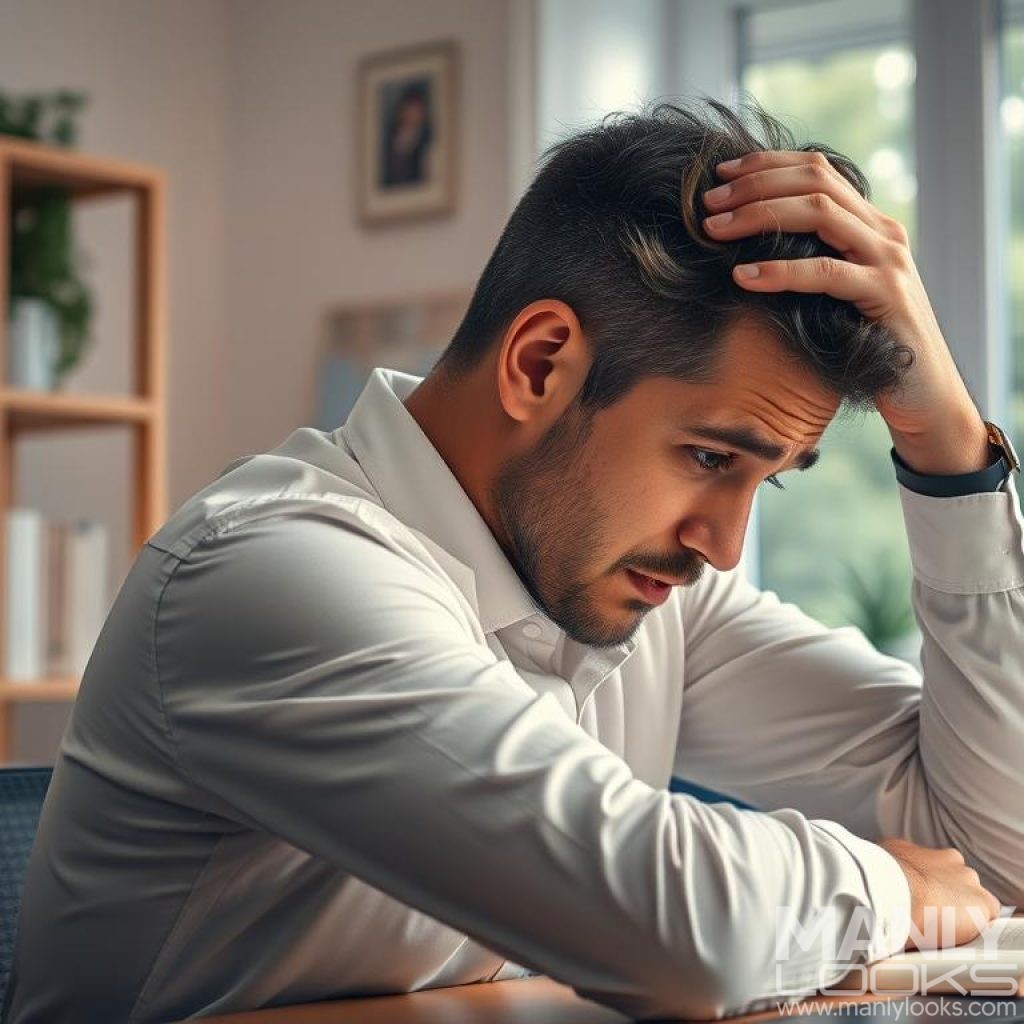
Sleep Optimization for Hair Growth
Sleep is vital for health, including hair. To sleep well, keep a regular schedule, create a cozy sleep space, and avoid caffeine before bed.
By using these stress management tips daily, men can improve their health and prevent hair loss.
Advanced Hair Loss Treatments
For those with significant hair loss, advanced treatments offer hope. These new methods have shown great results in treating male pattern baldness and other hair loss types.
Platelet-Rich Plasma (PRP) Therapy
PRP therapy involves injecting platelet-rich plasma (PRP) into the scalp. This plasma comes from the patient’s own blood, enriched with platelets and growth factors. It boosts hair growth by improving scalp blood flow and encouraging new hair follicles.
Benefits of PRP Therapy:
- Minimally invasive procedure
- Uses the body’s own healing processes
- Works well with other hair loss treatments
Low-Level Laser Therapy
Low-level laser therapy (LLLT) is a non-invasive method. It uses low-level lasers or light-emitting diodes to stimulate hair growth. LLLT increases hair density and promotes growth by improving scalp blood flow and reducing inflammation.
LLLT Devices:
- Laser caps
- Laser combs
- Home-use devices
Hair Transplant Options
Hair transplantation moves hair from one body part to another. It’s usually from the back and sides to the balding areas. There are two main techniques: FUE and FUT.
FUE (Follicular Unit Extraction)
FUE is a modern method. It extracts individual follicular units from the donor area using a special tool. This leaves little scarring and allows for quick recovery.
FUT (Follicular Unit Transplantation)
FUT removes a strip of hair-bearing skin from the donor area. It’s then dissected into individual follicular units for transplant. This method is more invasive but allows for transplanting many grafts at once.
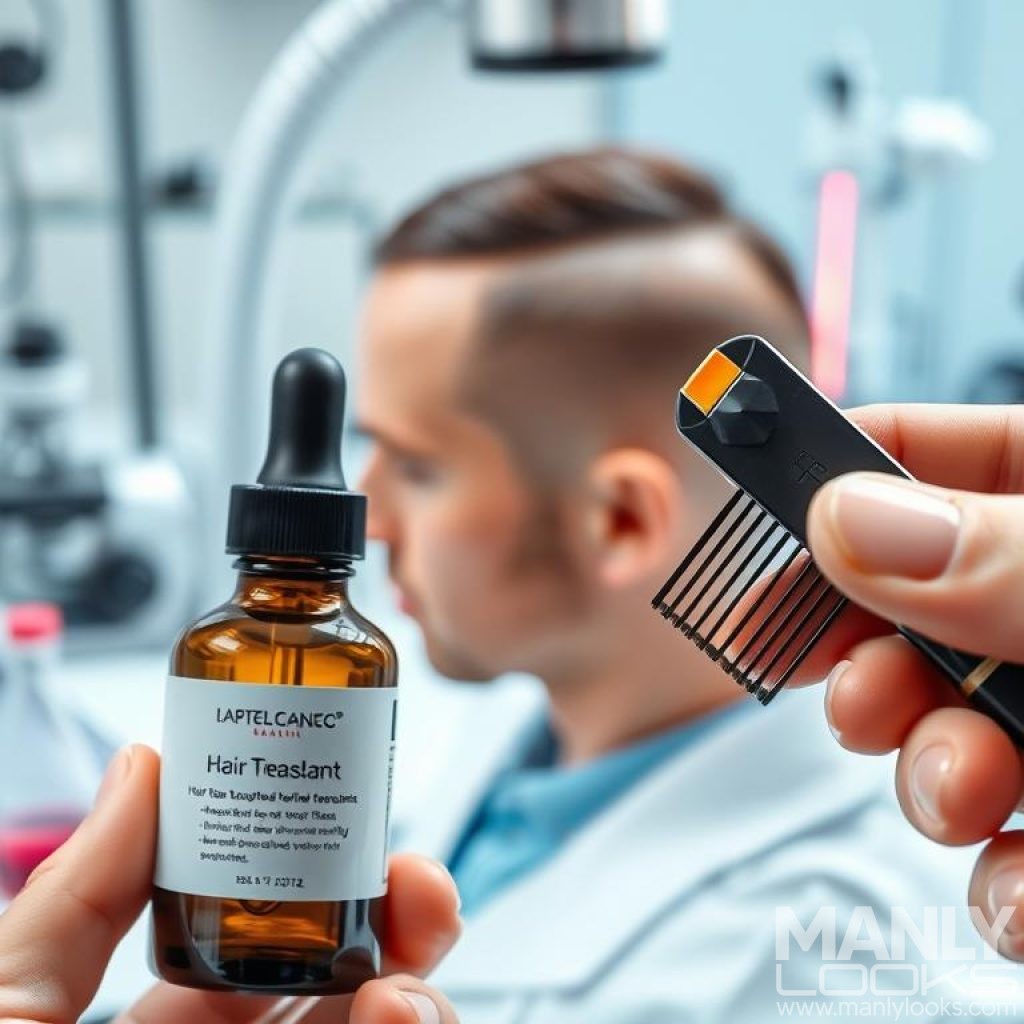
Emerging Treatments and Research
The field of hair loss treatment is always growing. New research explores treatments like stem cell and gene therapy. These could be future solutions for hair loss.
Keeping up with the latest hair loss treatments is important. Talking to a healthcare professional or dermatologist is key to finding the right treatment.
Hormonal Balance and Hair Health
Hair health is greatly affected by hormones like testosterone and thyroid hormones. Imbalances in these hormones can cause hair loss. It’s important to know about these factors to prevent and treat hair loss.
Testosterone and DHT Management
Testosterone and its byproduct, DHT, are key in male hair loss. DHT makes hair follicles shrink, leading to thinner, shorter hair. Keeping testosterone and DHT levels in check is key for healthy hair. This can be done through a healthy diet, exercise, and sometimes medication.
Thyroid Function and Hair Loss
Thyroid hormones control metabolism, which impacts hair growth. Both underactive and overactive thyroid can cause hair loss. It’s essential to keep thyroid levels normal for hair health. Treating thyroid issues can help prevent hair loss.
Hormone Testing and Treatment
Hormone tests can spot imbalances leading to hair loss. Blood tests check levels of testosterone, DHT, and thyroid hormones. Treatment depends on the imbalance and may include meds, lifestyle changes, or supplements.
Age-Related Hormonal Changes
As men age, hormonal shifts impact hair health. Testosterone drops, and DHT increases. Knowing these changes and treating them can help slow hair loss.
Keeping hormones balanced is vital for hair health. Understanding hormones like testosterone and thyroid hormones helps prevent hair loss. It promotes healthy hair growth.
Best Hair Loss Treatments for Men Based on Hair Loss Stage
Knowing the stage of hair loss is key to picking the right treatment. Men’s hair loss can start with early thinning and move to full balding. The stage of hair loss affects the treatment choice, with each stage needing a different approach.
Early-Stage Hair Loss Solutions
For early hair loss, treatments aim to slow down hair loss and maybe even grow some back. Medications like minoxidil are often suggested. Eating well and getting the right vitamins and minerals also helps hair health.
- Minoxidil (Rogaine) to stimulate hair growth
- Finasteride (Propecia) to slow hair loss
- Low-level laser therapy (LLLT) to promote hair regrowth
Moderate Hair Loss Interventions
When hair loss gets to the moderate stage, treatments get stronger. Prescription medications like finasteride can help slow hair loss. Some men find platelet-rich plasma (PRP) therapy helpful in making hair follicles work better.
- Combination therapy using minoxidil and finasteride
- PRP therapy to stimulate hair growth
- Dietary supplements to support hair health
Advanced Hair Loss Options
For advanced hair loss, surgery like hair transplantation is a good option. This method moves healthy hair follicles from the back to bald spots. It’s effective but more expensive and invasive.
- Hair transplantation for significant balding
- Scalp reduction surgery in select cases
Combining Treatments for Maximum Effect
Combining treatments often works best. For example, using minoxidil with finasteride and adding LLLT or PRP therapy can improve results. It’s important to talk to a doctor to find the best mix for your hair loss stage and health.
By knowing your hair loss stage and choosing the right treatment, men can better tackle their hair loss.
Styling Tips for Thinning Hair
Styling thinning hair needs the right haircuts, products, and techniques. By using the right strategies, men can make their hair look thicker and fuller.
Haircuts That Create Volume
The right haircut can greatly change how thinning hair looks. Layered cuts and textured styles add volume and movement. It’s also good to avoid too much length, as long hair can make hair look thinner.
Products for Thicker-Looking Hair
The right hair care products can make a big difference. Thickening shampoos and conditioners add volume. Styling products like pomades and thickening sprays also help make hair look fuller.
| Product Type | Benefits | Best For |
|---|---|---|
| Thickening Shampoo | Cleanses and adds volume | Daily use |
| Styling Pomade | Adds hold and texture | Styling |
| Thickening Spray | Adds instant volume | Touch-ups |
Coloring and Styling Techniques
Coloring and styling can also improve thinning hair’s look. Highlights can make hair look deeper. Staying away from too much contrast between hair color and scalp helps hide thinning.
Confidence-Building Strategies
Confidence is key in how we see our hair loss. Embracing your natural look and good grooming boosts confidence. Getting professional styling advice can also offer personalized tips for your hair type and needs.
Conclusion
Preventing hair loss in men needs a full plan. It must tackle the root causes, support healthy living, and use proven treatments. Knowing what causes hair loss helps people act early to keep their hair thick and healthy.
Key steps include eating well, managing stress, and choosing the right hair care. Medical treatments, like FDA-approved drugs and PRP therapy, are also key. These help stop hair loss.
By using all these methods, people can lower their risk of losing a lot of hair. This approach keeps hair healthy. It shows how important a detailed plan is for fighting male pattern baldness.

